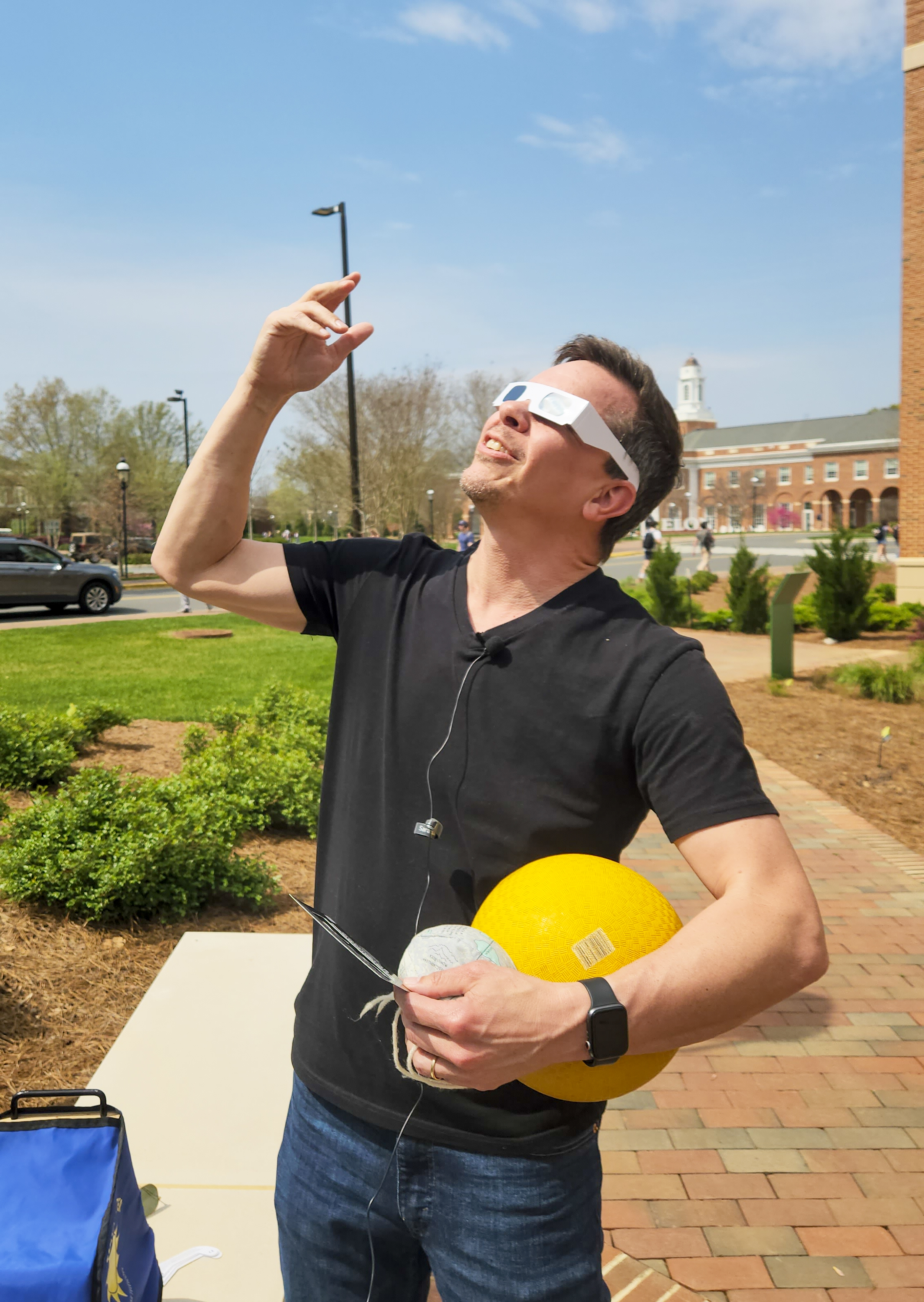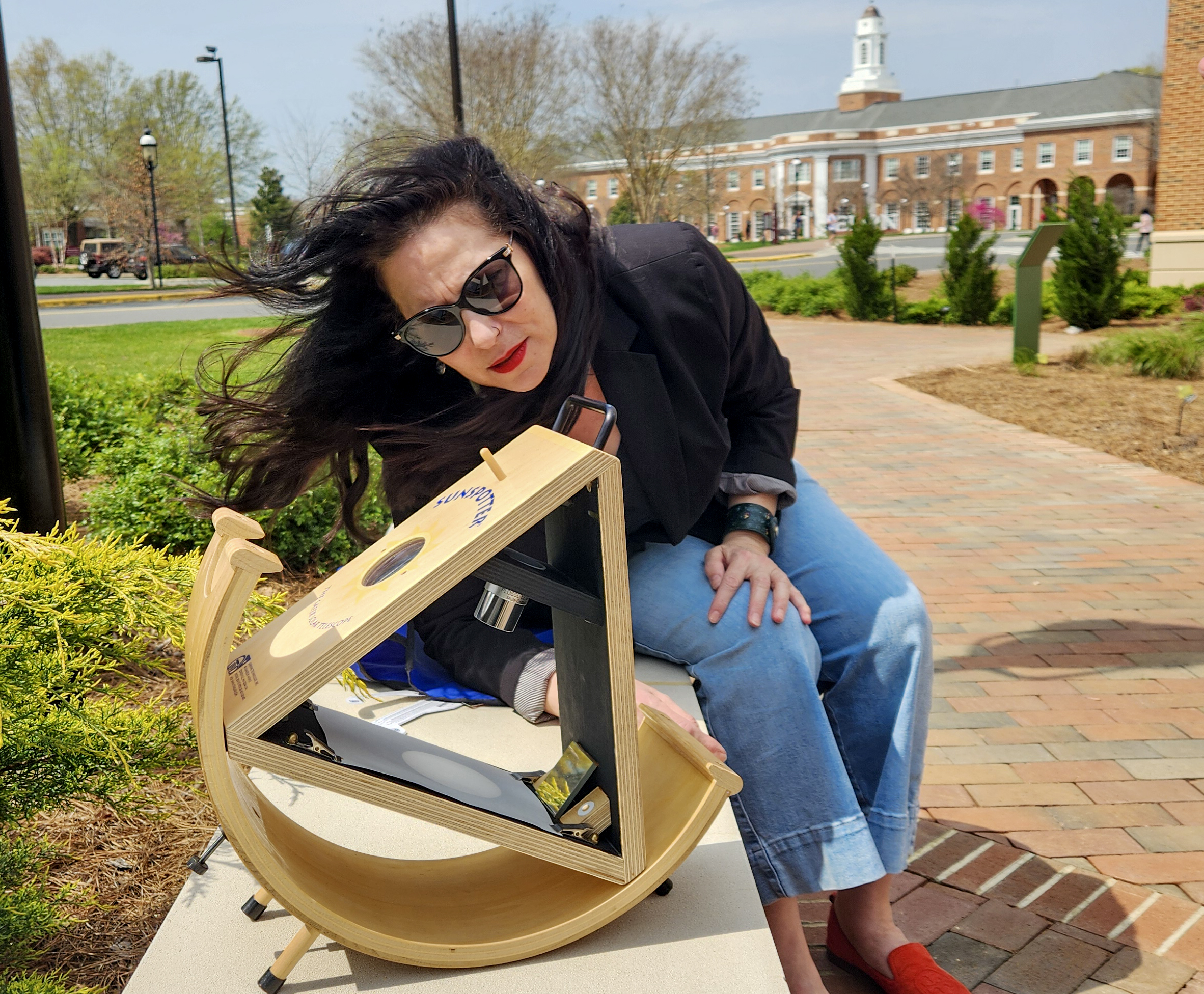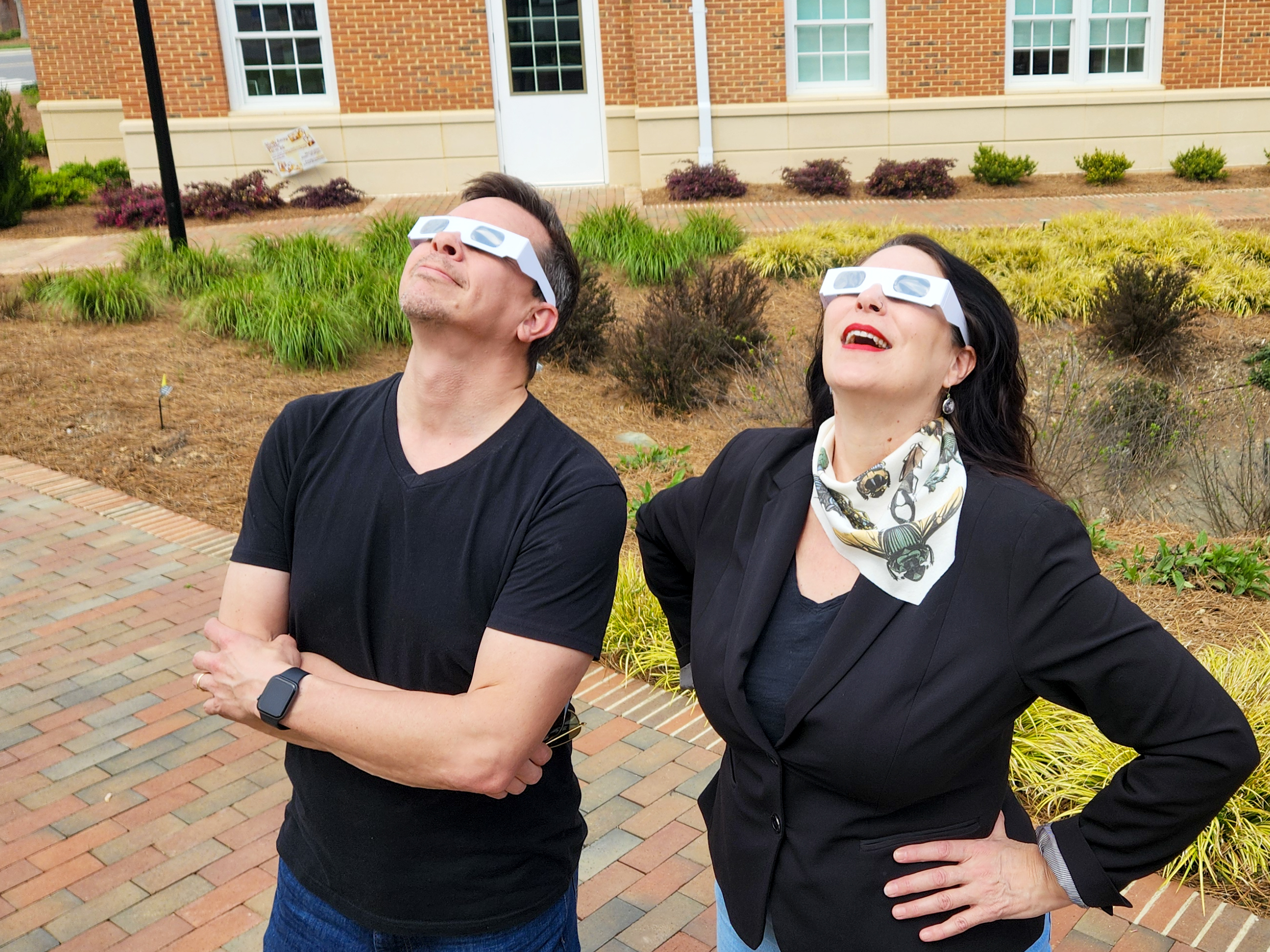The Department of Physics will host an eclipse viewing from 2-4 p.m. and provide up to 500 pairs of eclipse glasses to the campus community.
Ahead of a rare total solar eclipse on Monday, April 8, Elon’s physics and astrophysics faculty shared expertise about the cosmic phenomenon and prepared to help the campus community view the event.
Nearly 32 million Americans live in areas from Texas to Maine that will experience a total eclipse between around 2:30 p.m. and 3:30 p.m. ET on Monday when the moon passes in front of and completely obscures the sun.
Elon — like 99% percent of the continental U.S. — will experience a partial solar eclipse. The Department of Physics will host a viewing event from 2-4 p.m. in front of Founders Hall. Up to 500 pairs of eclipse glasses will be available for those on campus to observe the eclipse safely.

What will the eclipse look like in Elon?
Starting around 2 p.m., we’ll begin to see a partial eclipse with a maximum of 81% of the sun covered at 3:14 p.m., said Professor of Astrophysics Tony Crider.
The skies here will dim, but not darken — a reminder of just how bright and powerful the sun is — said Lecturer in Physics Claudine Moreau, who will observe the eclipse and assist at Monday’s campus viewing.
Where do I need to go to see the total solar eclipse?
You’ll need to be in the “path of totality” to see a total eclipse. From North Carolina, the closest place to view the total eclipse is Ohio. Interactive maps are available from the National Solar Observatory.
Many in the physics department are traveling to the path of totality. Crider will return to his family’s farm where he set up his first telescope and first learned astronomy.
How long will the eclipse last?
The partial eclipse will last over two hours. In the path of totality, the total eclipse will only last up to 4 minutes.
Why are solar eclipses so rare?
The last time U.S. residents saw a total solar eclipse was 2017. The next one we’ll see will be in 2044.
That’s due to the moon’s phases and the tilt in its orbit. Total eclipses only occur during a new moon, and because the moon’s orbit is tilted five degrees to Earth’s orbit around the sun, the moon’s shadow misses us most of the time.
“You live on this rock that’s orbiting a star and you just so happen to get an alignment this perfect,” Moreau said. “The size of the moon and the sun have to be almost perfectly matched on a planet that has the perfect size and distance relationship between these two celestial bodies. It’s really, really rare.”
How can you view the eclipse if you don’t have glasses?

Looking directly at an eclipse without glasses can damage your eyes. If you don’t have glasses, there are other ways to observe.
NASA provides these instructions to make your own “pinhole” projector. Another fun way to view it is by viewing light and shadows cast through the holes in a colander.
“You’ll see all these tiny little crescents of light where you’d normally see full circles,” Moreau said.
What are some phenomena to look for during the eclipse?
Colors, shadows and shapes will look sharper as the visible surface of the sun gets smaller.
“It’s been suggested to wear bright red and green to accentuate the peculiar visual effects because some colors will ‘pop’ during a heavy eclipse,” Crider said.
In areas of totality, insects and animals will behave as they do at nightfall.
“Plants, animals and humans all respond with a very visceral and biological way because it’s not normal for it to go from daytime to nighttime to daytime all in the course of 3 minutes.”
There may also be a change in temperature, depending on the amount of cloud cover Monday.
Where can I learn more about eclipses?
The best general resources for the eclipse are offered by NASA and the American Astronomical Society (AAS).
The Astronomical Society of the Pacific (ASP) AstroShop offers educational eclipse materials to teachers and the public.
Elon students can register for a wide variety of astronomy classes offered by the Department of Physics, including PHY 1020 Introduction to Astronomy, PHY 2040 Planetary Astronomy and PHY 2050 Galactic Astronomy.



